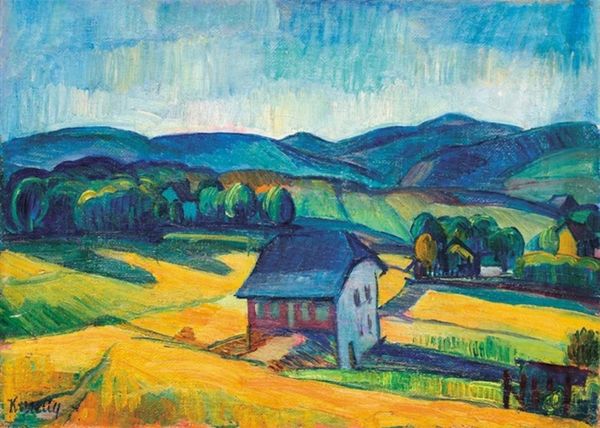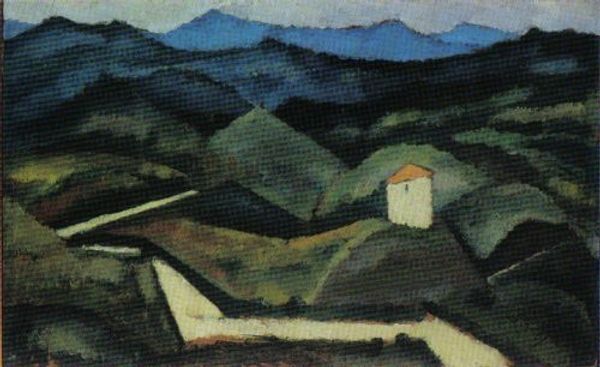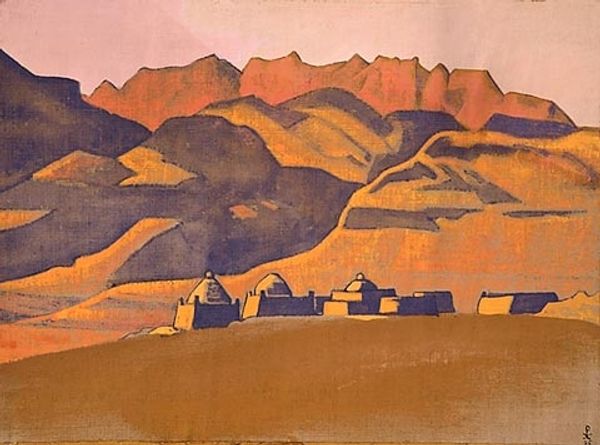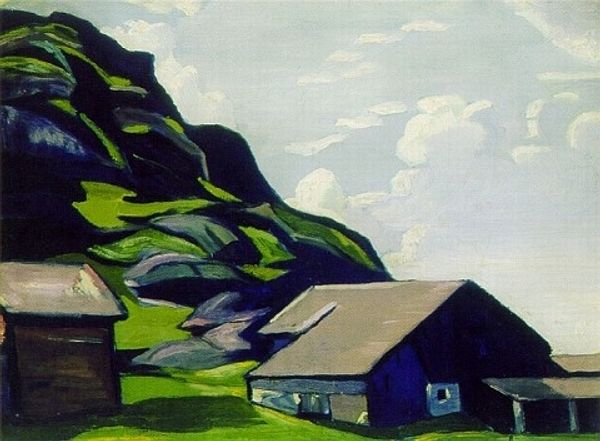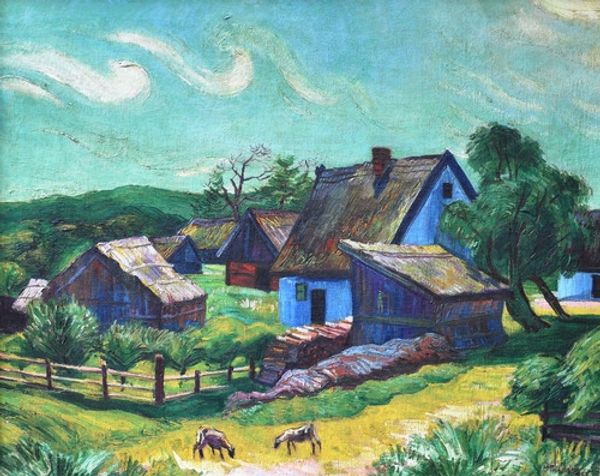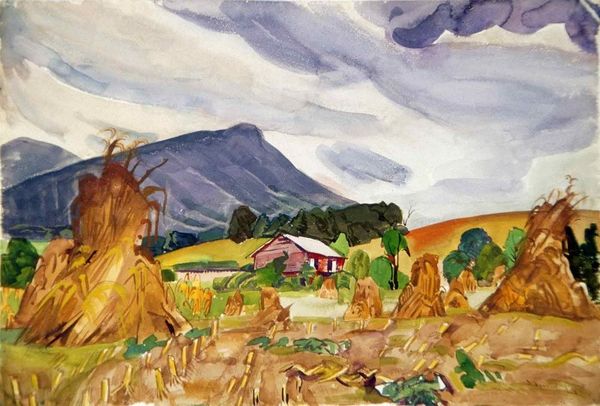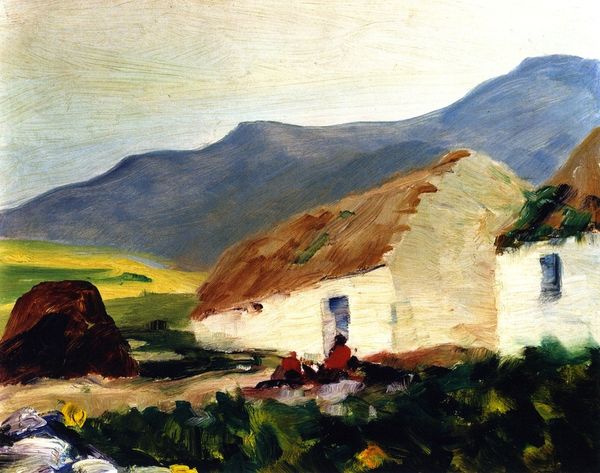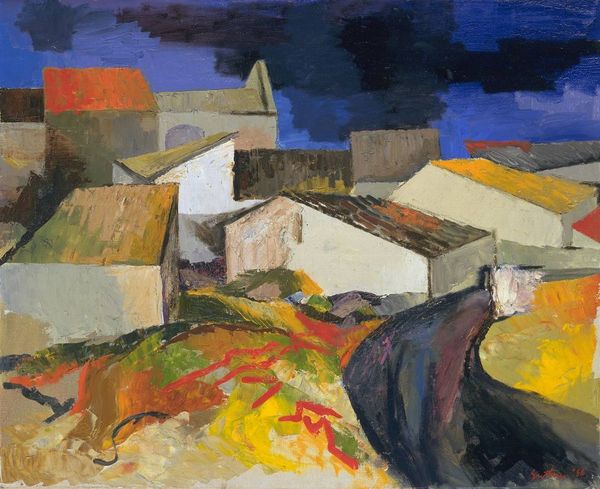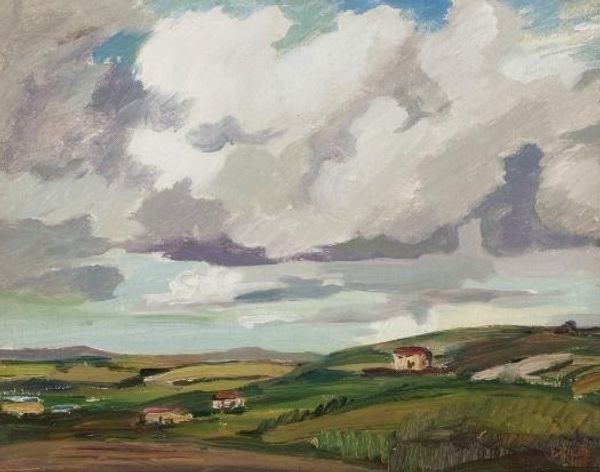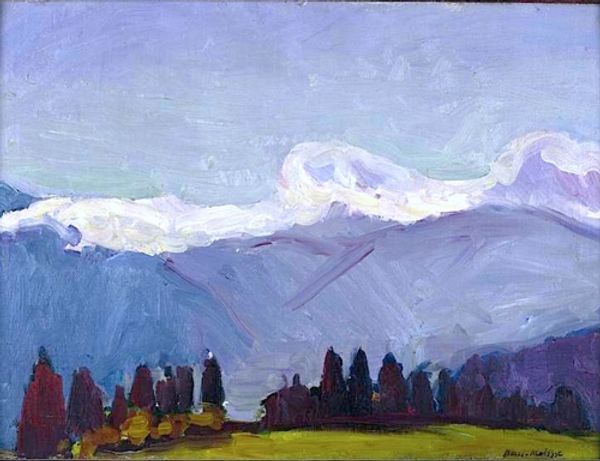
Dimensions: 31 x 46 cm
Copyright: Public domain
Editor: This oil painting, titled "Mongoliya (Olun Sume)" by Nicholas Roerich, was created in 1936. The sweeping landscape, especially the imposing sky, has this melancholy feel about it. How do you interpret this work, especially considering its historical context? Curator: Given the period, we need to consider the rise of geopolitical tensions. Roerich's spiritual and artistic explorations of Asia can be seen as both an embrace of Eastern philosophy, but also viewed through the lens of Orientalism – the Western gaze upon the East. Who gets to define 'Mongolia' here, and for whom? The stylized, almost simplified representation of the yurt raises questions. Is it celebrating nomadic culture or appropriating it? Editor: So, it's not just a peaceful landscape, but a complex statement about cultural exchange, or perhaps, power dynamics? Curator: Exactly. Roerich’s interest in Eastern spirituality shouldn't be separated from the political climate of the time. His paintings, while seemingly serene, were made during a period of immense global change, colonialism, and, let's not forget, his own controversial expeditions. Editor: I see. It’s important to question the artist’s position and how it impacts the message. I had overlooked how those worldviews shape the representation of a culture. Curator: Precisely. By analyzing this piece through the frameworks of postcolonialism and cultural studies, we uncover the underlying narratives and potential biases present within even the most seemingly benign landscape. Editor: Thanks for clarifying this, I understand so much better how crucial it is to examine these beautiful works more critically.
Comments
No comments
Be the first to comment and join the conversation on the ultimate creative platform.
